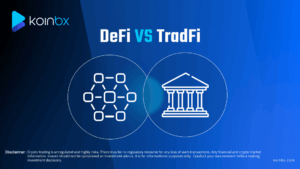For decades, SWIFT has been the backbone of international money transfers—but a new contender is emerging. Stablecoins, the digital bridge between traditional finance and blockchain, are positioning themselves as the future of cross-border payments. But can they really replace a system trusted by over 11,000 financial institutions across 200 countries?
The Legacy of SWIFT: A Global Standard Under Pressure
The Society for Worldwide Interbank Financial Telecommunication (SWIFT) has long been the messaging infrastructure for cross-border transactions. It doesn’t move money directly but acts as a communication system between banks to initiate and confirm transactions.
However, SWIFT has some critical shortcomings in the digital age:
- Delays: Transactions can take several days to complete, especially across time zones and jurisdictions.
- Costs: Fees can be high due to intermediaries involved at multiple levels.
- Lack of Transparency: Senders often don’t know where their money is during the process.
With global commerce growing more digital and instantaneous, there’s mounting pressure to innovate. And that’s where stablecoins step in.
Stablecoins: The Next-Gen Payment Layer?
Stablecoins are digital assets pegged to traditional currencies like the US Dollar, Euro, or a basket of assets. They combine the speed and transparency of blockchain with the price stability of fiat currencies.
The most notable examples include:
- USDT (Tether)
- USDC (Circle)
- DAI (MakerDAO)
- PYUSD (PayPal’s stablecoin)
With instant settlement, low fees, and 24/7 availability, stablecoins offer a compelling alternative to SWIFT-based payments.
Real-World Use Cases Are Growing
The shift from theory to practice is already underway. Companies and remittance platforms are integrating stablecoins into their payment pipelines.
- MoneyGram and Stellar have partnered to enable cash-to-crypto transactions using stablecoins.
- Visa and Mastercard have both piloted stablecoin settlement programs.
- Emerging economies like Argentina, Nigeria, and Turkey have witnessed a surge in stablecoin usage for cross-border transactions and inflation hedging.
The result? Lower costs, faster delivery, and increased accessibility for users across the world.
Why Stablecoins May Succeed Where SWIFT Struggles
Let’s break down the benefits that give stablecoins an edge:
- Speed: While SWIFT transactions may take 2–5 business days, stablecoin transactions can settle in seconds or minutes—any time, day or night.
- Cost-Effective: By eliminating intermediaries and using decentralized networks, stablecoins reduce transaction costs, especially important for low-margin businesses and migrant remittances.
- Transparency: Public blockchains allow for real-time tracking of funds, increasing accountability and reducing fraud.
- Financial Inclusion: Billions remain unbanked or underbanked. All you need to use stablecoins is a smartphone and internet connection—no bank required.
What’s Holding Stablecoins Back?
Despite the advantages, stablecoins aren’t ready to fully replace SWIFT—yet. There are several challenges:
1. Regulatory Uncertainty
Governments and regulators worldwide are still grappling with how to classify and oversee stablecoins. Is it money? A security? A commodity? The answers vary by jurisdiction, leading to:
- Compliance risks
- Licensing bottlenecks
- Restricted access in some regions
2. Trust and Backing
The value of stablecoins depends on the trust in their reserves. Scandals and lack of transparency—especially involving Tether’s reserve disclosures—have raised eyebrows. For stablecoins to be considered systemically reliable, audited reserves and regulatory oversight are essential.
3. Interoperability and Integration
SWIFT has decades of infrastructure, network effects, and partnerships across the banking world. For stablecoins to scale, they’ll need more cross-chain compatibility, on/off ramps, and bank-level integrations.
4. Volatility of Host Blockchains
While stablecoins themselves are designed to avoid volatility, they are still hosted on blockchains like Ethereum, Solana, or Tron. Congestion or high gas fees on these networks can make transactions expensive or slow—ironically undermining their own advantages.
Hybrid Models: The Likely Short-Term Outcome
Instead of a full replacement, the next few years will likely see a hybrid approach:
- SWIFT may adopt blockchain rails (e.g., through ISO 20022 and Chainlink’s CCIP).
- Banks might settle in stablecoins on permissioned networks like JPM Coin or USDF.
- CBDCs (Central Bank Digital Currencies) may be launched alongside regulated stablecoins to facilitate compliant, real-time global transfers.
For instance, Circle’s USDC is actively working with regulators and traditional financial institutions to bridge this gap, while RippleNet and Stellar are positioning themselves as enterprise-grade blockchain solutions.
Strategic Implications for Businesses and Governments
For businesses involved in international trade, payroll, freelancing platforms, or remittances, adopting stablecoins could:
- Reduce overhead
- Improve payment efficiency
- Open up new global markets
For governments, however, this poses risks related to monetary policy control, capital flight, and AML/KYC compliance. Some nations may embrace stablecoins, while others crack down to protect sovereign currencies.
Conclusion: A Question of “When,” Not “If”
Stablecoins may not dethrone SWIFT overnight, but the writing is on the wall: the world is moving toward faster, cheaper, and borderless financial systems. Whether through fully decentralized stablecoins or tightly regulated digital dollars, the need for a modern alternative is undeniable.
In the coming years, we’ll likely witness a gradual phasing in of stablecoin infrastructure—first as a supplement, then as a serious competitor to legacy systems.
So, can stablecoins replace SWIFT?
Not today.
Not fully.
But if the trends continue, tomorrow’s cross-border transactions may look radically different—and stablecoins will be at the center of that transformation.










